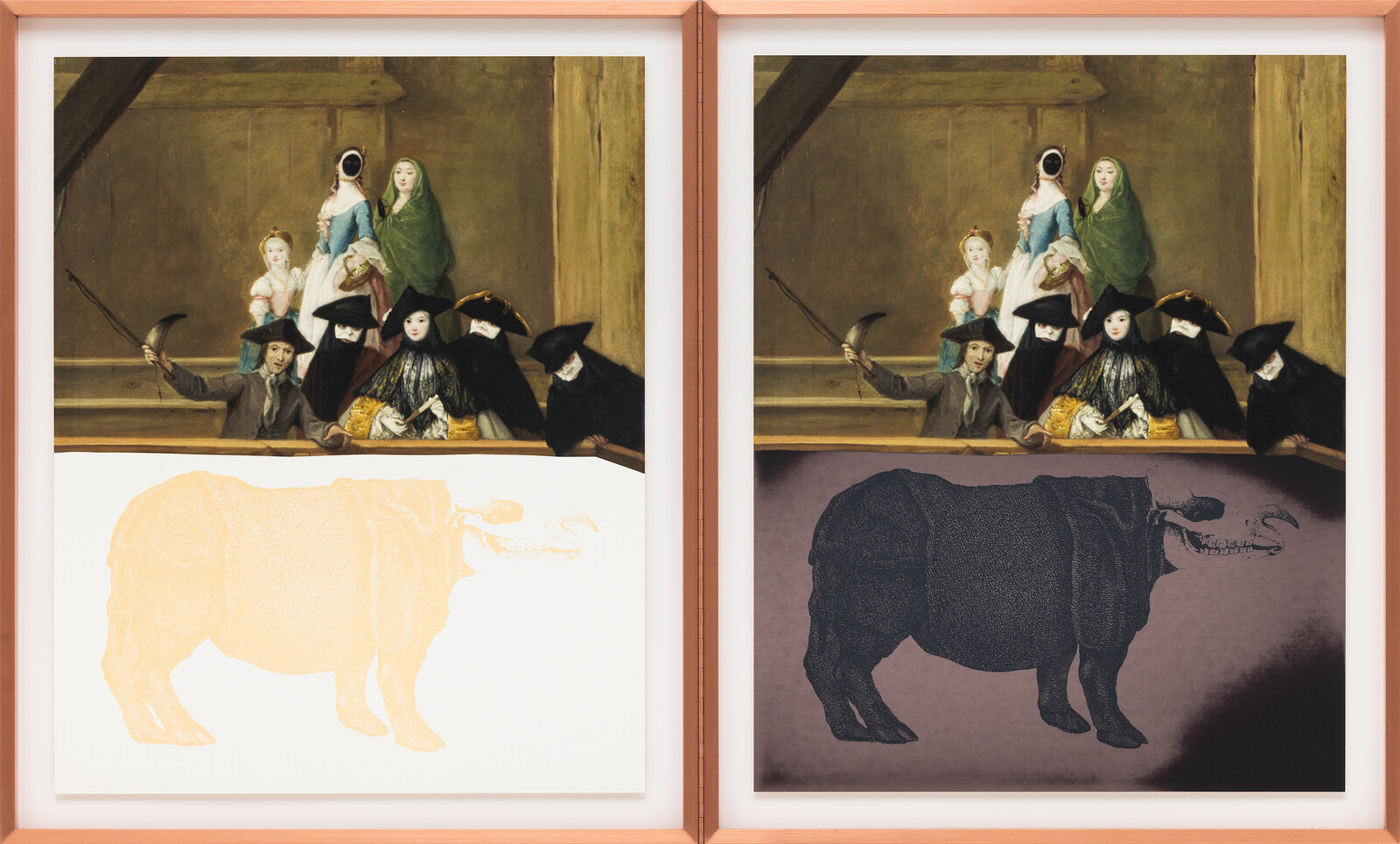Categories
Subjects
Authors
Artists
Venues
Locations
Calendar
Filter
Done
June 13, 2023 – Review
Rirkrit Tiravanija’s “We Don’t Recognise What We Don’t See”
Christine Han

The formally diverse series of works that anchor Rirkrit Tiravanija’s new solo exhibition each highlight the accelerating inequity among living beings and propose tentative frameworks for their reconciliation. On entering the exhibition, the visitor is greeted by framed prints of five Old Master paintings which have been appropriated and adapted by Tiravanija. In twinned reproductions of Pietro Longhi’s Il rinoceronte (1751), for instance, Tiravanija has altered or partly obscured the original image of Clara—the first rhinoceros brought into Europe from Asia—as depicted in a Venetian carnival. The implication of the title (untitled, 2020 [we are not your pet], 2023) seems clear: to disrupt the idea that nature as distinct from humanity is something to be tamed and subordinated.
Then there are the mysterious, seemingly empty spaces in Jan Brueghel the Elder’s The Temptation in the Garden of Eden (ca. 1600). Where are the horses, swans, tigers, antelopes, and hares? I did as the gallery told me and shone a UV flashlight onto its surface, where now I could discern the peculiar, enigmatic shadows of departed birds (screen-printed onto the image with solar dust ink by the artist) perched on trees. They appear morbid, gentle, and undefined. Should we be thinking …
March 16, 2021 – Review
Heman Chong’s “Peace Prosperity And Friendship With All Nations”
Christine Han

“PEACE PROSPERITY AND FRIENDSHIP WITH ALL NATIONS,” declares a wall piece mounted beside the entrance to Heman Chong’s solo show at Singapore’s STPI. Written in an all-caps, dripping black font reminiscent of leaking bodily fluids and suggesting violence, the arresting phrase—which lends the exhibition its title—is lifted from a British coin minted to commemorate the UK’s formal withdrawal from the European Union on January 31, 2020. Direct and ambiguous, official and hilarious, the piece combines the playful language of conceptual art with the immediacy and seriousness of contemporary history. In doing so, it sets the tone for an exhibition that brings into focus the artist’s powerful use of appropriation, abstraction, and repetition in addressing the restrictiveness and complexity of the present.
In Call for the Dead (2020)—83 black-and-white scans of pages from the eponymous 1961 novel by John Le Carré, screen-printed on linen and hung in a grid-like formation in a long, white-walled gallery—Chong takes his experiments with text into new territory. The Cold War fantasies of the mid-century spy genre might here be read as a comment on decoloniality: the novel was written while Le Carré was working as a spy for MI6—which had a regional outpost in Singapore. …